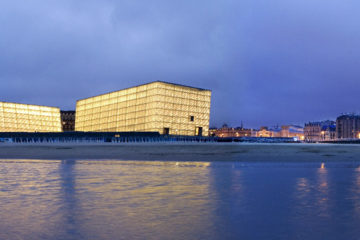
Malkit Shoshan presents her research BLUE: Architecture of UN Peacekeeping Missions at the Dutch Pavilion during the 15th Venice Architecture Biennale in 2016. Shoshan, an architect and founder of the architecture think tank FAST, has been a fellow of Het Nieuwe Instituut for the past two years. Her on-going research into architecture in conflict areas fits neatly within the overarching theme for the 2016 Architecture Biennale: ‘Reporting from the Front’.

Malkit Shoshan has focussed on the progressive way that the Netherlands contributes to UN peacekeeping missions. The United Nations itself talks in terms of ‘Guidelines for the Integrated Approach’, uniting Defence, Diplomacy, and Development. Shoshan proposes adding a fourth ‘D’ for Design. The ambition is to see the UN base not as a closed fort but as a catalyst for local development.

The presentation in the Dutch Pavilion centres on the case study of Camp Castor in Gao, Mali, where the UN is carrying out a peacekeeping mission. The colour blue is used as a metaphor for the conflict, uniting architecture and human rights. The peacekeeping mission is located in the desert region of the Toeareg, known as ‘blue men’ because of their indigo clothing, and is carried out by UN Blue Helmets. In this nomadic region the borders are fluid and shift with the seasons; there is a state of permanent crisis due to war, climate change, sickness and hunger.

The confrontation between different systems – foreign and local, military and civilian, settlement and desert, Blue Helmets and blue people, the crisis and the Dutch response – provides the prerequisites for new spatial conditions. By linking cultural research to architectural research, the Dutch submission to Venice aims to make visible the spatial challenges and opportunities of this complex situation.

BLUE presents a new series of narratives for architecture in conflict areas, central to which is the potential to improve the lives of millions of people. These stories are based upon conversations with military engineers and architects, anthropologists and economists, activists and policy makers.

Images courtesy of Iwan Baan
Discover: blue.hetnieuweinstituut.nl



